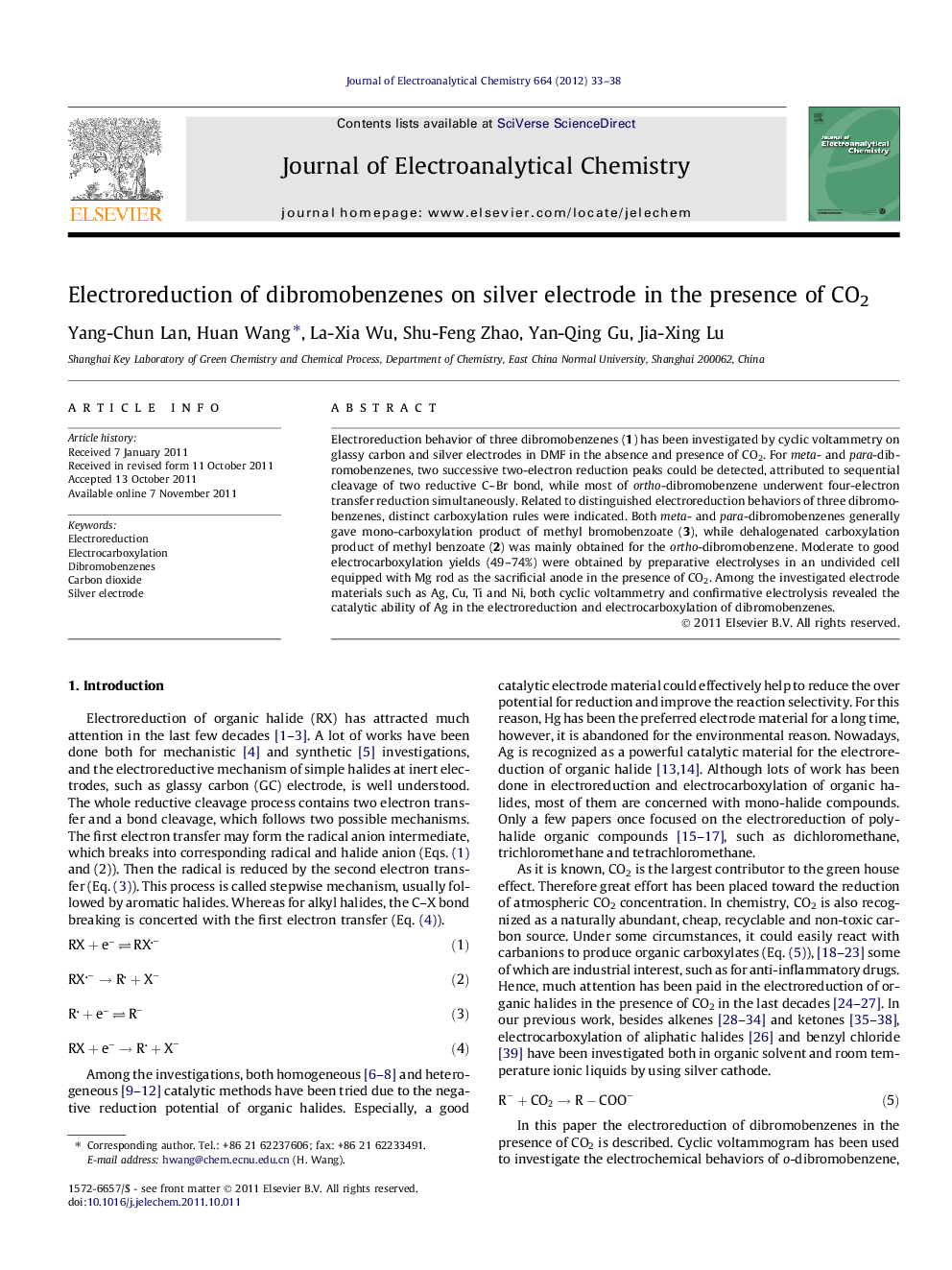| Article ID | Journal | Published Year | Pages | File Type |
|---|---|---|---|---|
| 219456 | Journal of Electroanalytical Chemistry | 2012 | 6 Pages |
Electroreduction behavior of three dibromobenzenes (1) has been investigated by cyclic voltammetry on glassy carbon and silver electrodes in DMF in the absence and presence of CO2. For meta- and para-dibromobenzenes, two successive two-electron reduction peaks could be detected, attributed to sequential cleavage of two reductive C–Br bond, while most of ortho-dibromobenzene underwent four-electron transfer reduction simultaneously. Related to distinguished electroreduction behaviors of three dibromobenzenes, distinct carboxylation rules were indicated. Both meta- and para-dibromobenzenes generally gave mono-carboxylation product of methyl bromobenzoate (3), while dehalogenated carboxylation product of methyl benzoate (2) was mainly obtained for the ortho-dibromobenzene. Moderate to good electrocarboxylation yields (49–74%) were obtained by preparative electrolyses in an undivided cell equipped with Mg rod as the sacrificial anode in the presence of CO2. Among the investigated electrode materials such as Ag, Cu, Ti and Ni, both cyclic voltammetry and confirmative electrolysis revealed the catalytic ability of Ag in the electroreduction and electrocarboxylation of dibromobenzenes.
► We have studied the electroreduction behavior of three dibromobenzenes by cyclic voltammetry. ► The position of the Br atom on the benzene ring influences the peak potentials of the first reduction. ► For the distinguished electroreduction behavior, different carboxylated product ratios were obtained. ► It confirms the best catalytic ability of Ag among Ag, Ti, Ni and Cu materials.
